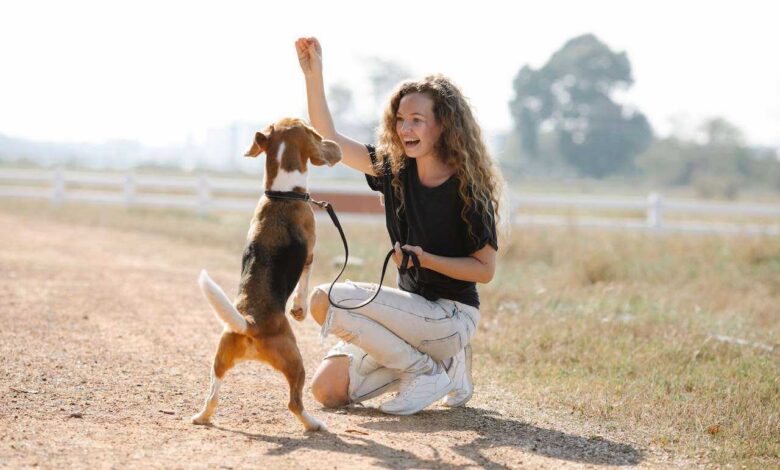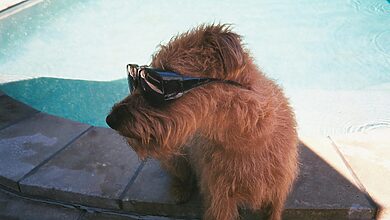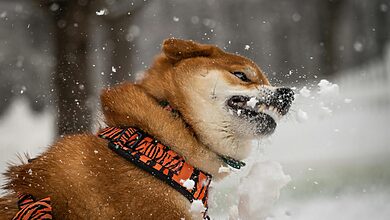Understanding the Fundamentals of Clicker Training

Clicker training is a highly effective and widely used positive reinforcement technique that can be applied to a variety of animals, including dogs, cats, and even marine mammals. At its core, it involves using a small handheld device called a clicker, which emits a distinct and consistent “click” sound when pressed. This sound serves as a marker, indicating to your pet that they’ve performed the desired behavior correctly. The real magic happens when you follow up the click with a reward, typically a treat or affectionate praise. This creates a powerful association in your pet’s mind: “Click” equals a reward for good behavior.
Table of contents
How Does Work?
Clicker training operates on the principles of operant conditioning, specifically positive reinforcement. Here’s a step-by-step breakdown of how it works:
- Mark the Behavior: When your pet performs a behavior you want to encourage, such as sitting on command, you immediately press the clicker, producing the distinctive sound.
- Reward the Behavior: Following the click, you provide an immediate reward, such as a treat. The key is to offer the reward within a few seconds of the click so your pet clearly associates the sound with the treat.
- Repeat and Reinforce: By consistently clicking and rewarding the desired behavior, your pet learns that the sound of the clicker signals a positive outcome. They’ll be more likely to repeat the behavior in the hopes of receiving another reward.
Benefits
Clicker training offers numerous advantages for both pets and owners:
- Precise Communication: The clicker provides a clear and precise signal, eliminating any confusion or ambiguity in your pet’s mind about what behavior you’re rewarding.
- Accelerated Learning: Pets tend to learn faster through positive reinforcement, making training sessions more efficient.
- Stronger Bond: Clicker training fosters a deep and trusting bond between you and your pet, as it’s based on mutual understanding and positive interactions.
- Adaptable to Various Animals: While commonly used for dogs, clicker training can be applied to cats, birds, rabbits, and more, making it a versatile training method.
Tips
To make the most of clicker training, consider these valuable tips:
- Keep Sessions Short and Sweet: Pets have short attention spans. Keep training sessions brief, around 10-15 minutes, to maintain their focus and enthusiasm.
- High-Value Rewards: Use treats or rewards that your pet absolutely loves. This will motivate them to work harder and respond better to the clicker.
- Consistency is Key: Be consistent with your clicks and rewards. Timing matters—click the moment your pet performs the desired behavior.
- Start Simple: Begin with basic commands like “sit” or “stay” before moving on to more complex behaviors.
- Stay Patient: Every pet learns at their own pace. Patience and persistence are essential for successful clicker training.
Common Mistakes to Avoid
To ensure your clicker training is a success, steer clear of these common errors:
- Inconsistent Clicking: Be precise with your clicks. Inconsistent timing can confuse your pet.
- Using the Clicker as a Remote Control: The clicker should not be used to get your pet’s attention or call them from a distance. It’s strictly a marker for good behavior.
- Overloading Commands: Stick to one command at a time during a training session. Don’t overwhelm your pet with too many instructions at once.
The Art of Clicker Training for Dogs
For Puppies
Puppies are like sponges, soaking up knowledge quickly. Clicker training is an excellent way to start their education:
- Basic Commands: Begin with foundational commands like “sit,” “stay,” and “come.” The clicker helps them grasp these essential behaviors.
- Short Sessions: Puppies have short attention spans, so keep training sessions short and positive.
- Socialization: Use clicker training to encourage positive social interactions with other dogs and people.
Adult Dogs
Clicker training is equally effective for adult dogs:
- Advanced Commands: Teach more advanced commands or address specific behavior issues using the clicker.
- Positive Reinforcement: Reinforce positive behavior in your adult dog through clicker training sessions.
For Older Dogs
Senior dogs can still enjoy the benefits of clicker training:
- Cognitive Stimulation: Clicker training helps keep senior dogs mentally sharp and engaged.
- Low-Impact Activities: Tailor training to accommodate any physical limitations your senior dog may have.
Reactive Dogs
Reactive dogs can learn to manage their reactions through clicker training:
- Calm Behavior: Use the clicker to reinforce calm and non-reactive behavior.
- Gradual Exposure: Help your reactive dog adapt to challenging situations by slowly exposing them and rewarding calm responses.
For Dogs with Functional Needs
Pets with functional needs or anxieties, can thrive with clicker training:
- Customized Approach: Tailor your clicker training techniques to accommodate your pet’s unique circumstances.
- Professional Guidance: Consult with a trainer experienced in functional needs cases for effective strategies.
Dive Deeper
Games
Clicker training games can make learning fun and engaging for your pet:
- 101 Things to Do with a Box: Challenge your pet’s problem-solving abilities by using the clicker to reward interactions with a simple cardboard box.
- Find It: Encourage your pet to use their senses by hiding treats and using the clicker to reward successful discoveries.
Exploring Products
Various products are available to enhance your training experience:
- Different Clicker Types: Explore different clicker styles to find the one that’s most comfortable for you to use.
- Clicker Apps: Consider apps that provide virtual clicker sounds for your smartphone.
- Wristband Clickers: These clickers attach to your wrist for easy handling during training.
- Target Sticks: Target sticks are valuable for advanced training, helping your pet learn to touch a specific object or area.
- Treat Pouches: Keep your rewards easily accessible with a treat pouch designed for training sessions.
For Beginners
If you’re new to clicker training, start with the basics and gradually progress:
- Online Resources: Explore online tutorials and resources to build your knowledge.
- Professional Trainers: Consider enrolling in classes or working with a professional trainer to master clicker training techniques.
For Busy People
Even if you have a hectic schedule, you can still incorporate clicker training into your daily routine:
- Short Sessions: Short, focused training sessions can be highly effective and fit into your busy day.
DIY Tips
For a hands-on approach to clicker training, you can create your own sound using common household items:
- Use a Pen: Click the button of a retractable pen to produce a clicking sound.
- Snap Your Fingers: Snap your fingers loudly to serve as a clicker substitute.
- Homemade Clicker: Craft your own clicker using simple materials.
- Homemade Treats: Make homemade treats that your pet will love.
Final Thoughts
Clicker training offers a fun and rewarding approach to pet training that fosters communication, accelerates learning, and strengthens the bond between you and your pet. Remember, consistency and patience are your allies in this training journey. Embrace the power of the clicker, and enjoy the positive results it brings to your pet’s behavior and your relationship with them. Happy training!








